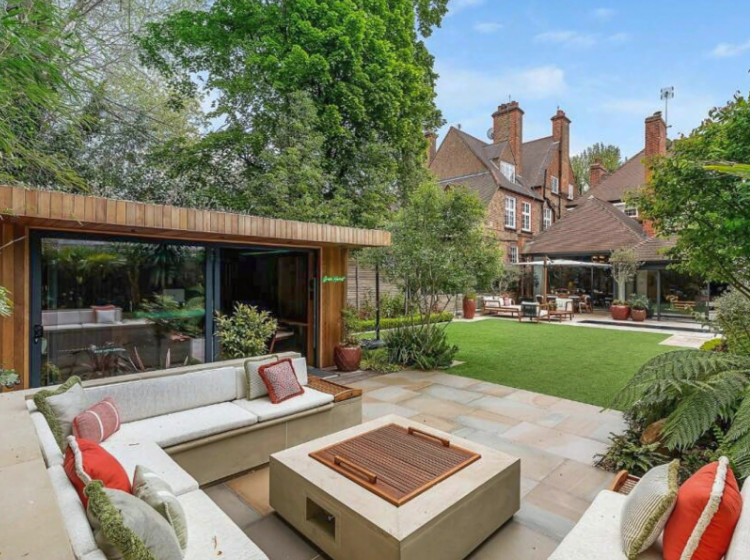How to Renovate Your Garden and Add Value to Your Property

Your Garden Could Be Your Home’s Hidden Goldmine
Ever catch yourself staring out that back window, cringing at the weeds taking over and that wonky shed that’s seen better days? Here’s the thing – you might be looking at one of the biggest missed opportunities on your entire property.
Garden renovation isn’t just about making things look pretty. It’s about creating an outdoor space that actually works for you while bumping up your home’s value in a big way. We’re talking up to 20% increases in property prices when it’s done right. Not bad for something that’ll give your family a space they’ll actually want to use.
The pandemic really changed the game, didn’t it? Suddenly everyone realised their garden wasn’t just somewhere to dump the bins. It became an extension of living space. Home offices, outdoor dining rooms, proper relaxation zones – people started seeing that outside space could work just as hard as inside.
What Garden Renovation Really Means
Look, garden renovation goes way beyond just cutting the grass and trimming a few bushes. We’re talking about a complete rethink of how your space looks, feels, and actually functions. Think bigger – structural changes, new surfaces, proper lighting, thoughtful planting, maybe even some buildings.
It’s not maintenance, it’s transformation. You might be looking at replacing fencing, putting in raised beds, or creating proper zones for different activities. The works.
Most professional jobs take anywhere from four to twelve months, depending on what you’re dealing with. Budget-wise? You’re looking at £5,000 for a compact space right up to £30,000+ for the full works with multiple zones and garden rooms. The trick is knowing what you want from the start – are you after a space for entertaining, somewhere peaceful to unwind, or a bit of both?
The Property Value Boost
Now this is where it gets interesting. According to UpKeep UK, a well-designed garden can boost property value anywhere from 16% to 70% – and that depends on where you are and how well it’s executed.
- Large gardens can add around £22,000 to what you’ll get for your house.
- Medium gardens contribute roughly £18,000.
- Small gardens can still add almost £10,000 on average.
And here’s a nugget for you – south-facing gardens sell faster and for about 7% more than north-facing ones. Makes sense when you think about it.
A decent £10,000 renovation can easily add £15,000–£25,000 in property value. That’s a pretty impressive return before you even factor in the years of enjoyment you’ll get.
In places like London and the South East where outdoor space is gold dust, a clever renovation – especially one with outdoor rooms and proper seating areas – can add £40,000 or more to what your property’s worth.
Step 1: Understand and Plan Your Space
Before you get the landscapers round, spend some time really understanding what you’re working with.
Do yourself a basic survey:
- Soil check – is it clay or sandy? This affects drainage and what’ll actually grow.
- Sun mapping – track where the light falls throughout the day.
- Boundaries and access – crucial before you start building walls or laying paths.
Sort the practical stuff first. Drainage issues, cracked paving, wobbly fences – get these sorted before you even think about the pretty stuff.
Here’s a budget breakdown that actually works – the 40-30-20-10 rule:
- 40% for hard landscaping (patios, walls, fencing)
- 30% for soft landscaping (plants, turf, soil)
- 20% for special features (lighting, water features, garden buildings)
- 10% contingency (trust me, you’ll need it)
Step 2: Clear and Prepare the Site
Land clearance is the bit everyone underestimates. Seriously. Getting rid of old shrubs, rubble, or knackered structures can cost £150–£400 just for skip hire.
Then there’s soil improvement – and this is vital for long-term success. You’ll want to mix in compost or organic matter and sort any drainage problems before you start planting or paving. Always mark out where your utilities run before you start digging – hitting a gas main can really mess up your day.
Step 3: Build the Framework – Hard Landscaping
Your hardscape is basically the skeleton of your garden – patios, paths, decking, retaining walls. This is what creates the structure and flow of the space.
- Patios cost around £80–£90/m² and they’re usually the social heart of any garden.
- Decking (from £1,200–£1,800) works brilliantly on sloped plots. The composite stuff now outlasts timber and needs virtually no maintenance.
- Walls and raised beds give you height and definition. Brickwork costs £70–£120/m² but it’ll last decades.
- Paths and driveways should be permeable these days – better for drainage and the planners love it.
This is where your garden starts to take proper shape. Get quality foundations here and you’ll have fewer headaches later. It’s also very important to pest control, to ensure your garden stays safe.
Step 4: Add Life – Planting and Green Design
Right, once your structure’s sorted, this is where the real fun begins. Planting is what brings your garden properly alive.
You’ll want a mix of perennials, evergreens, and seasonal plants to keep things interesting all year round. Combine the practical stuff (hedging for privacy, ground cover to stop erosion) with the eye-catching bits like ornamental grasses or statement trees.
- Turf vs Artificial Grass: Natural lawns cost £2.50–£6.50/m². Artificial grass costs more upfront (£40–£60/m²) but you’ll save hours on maintenance.
- Privacy planting: Fast-growing hedges like Cherry Laurel or Photinia Red Robin give you screening without harsh fencing.
- Mature plants: They cost more, but you get instant impact – perfect for focal points or if you’re selling soon.
Step 5: Enhance with Features and Lighting
Modern gardens often have multiple “zones” – dining, relaxation, play, storage. Smart additions can take a space from decent to absolutely brilliant.
- Garden rooms and offices: Prices start around £15,000, but they add serious usability and value.
- Water features: They’re calming and great for wildlife, though they do need regular maintenance.
- Outdoor lighting: A professional installation (£150–£250 per day) improves safety and creates proper atmosphere. Mix low-voltage spotlights, solar markers, and warm LEDs for the best effect.
Smart garden tech – app-controlled irrigation, solar lighting – adds convenience and keeps energy costs down.
Step 6: Budget Wisely
Let’s talk real numbers here. Small gardens (up to 50 square metres) typically cost £3,000-£8,000 to renovate properly. Medium gardens (50-150 square metres) range from £8,000-£15,000, while large gardens (150+ square metres) can easily hit £15,000-£30,000 or more for the full transformation.
The split between materials and labour usually runs 60% materials, 40% labour – though this varies depending on how much you fancy doing yourself. Regional differences are pretty significant too, with London and the Southeast running 20-30% higher than up north for both materials and labour.
| Garden Size | Total Cost Range | Materials (60%) | Labour (40%) | Typical Features |
| Small (up to 50m²) | £2,000-£8,000 | £1,800-£4,800 | £1,200-£3,200 | Patio, raised beds, basic lighting |
| Medium (50-150m²) | £8,000-£15,000 | £4,800-£9,000 | £3,200-£6,000 | Decking, lawn, mature planting, shed |
| Large (150m²+) | £15,000-£30,000+ | £9,000-£18,000+ | £6,000-£12,000+ | Multiple zones, garden rooms, water features |
DIY savings: If you’re handy with tools, tackle smaller jobs like painting fences, planting, or laying gravel yourself – you could save 30–40% on labour costs.
Phased renovation: Spread big projects across 2–3 years to manage costs and tweak your design as you go.
Seasonal shopping: Buy plants in late-season sales, furniture in autumn, and materials in winter when demand drops.
Step 7: When to Call the Professionals
DIY’s all well and good – but some jobs really need trained specialists.
Get professionals in for:
- Structural or electrical work
- Major drainage or grading
- Tree surgery or large-scale planting
- Full design and layout planning
Garden designers and landscape architects typically charge £50–£150 per hour, but their experience can save you thousands by preventing expensive mistakes. Contact UpKeep UK for a custom quote.
Step 8: Planning Permission and Regulations
Most garden projects fall under permitted development rights, but it’s always worth checking before you build anything permanent.
- Sheds under 2.5m high and under 50% garden coverage usually don’t need permission.
- Decking under 30cm height is fine, but raised or overlooking structures might need approval.
- Driveways over 5m² require permeable materials or proper drainage solutions.
When in doubt, give your local planning office a call before you start building – it’s quicker and cheaper than sorting compliance issues after the fact.
Step 9: Maintenance and Long-Term Care
The first year after renovation is absolutely crucial. New plants and turf need consistent watering, while hard surfaces might shift slightly as everything settles in.
Plan for £500–£2,000 a year in upkeep depending on your garden size. That covers seasonal pruning, fertilising, cleaning, and minor repairs. Many contractors offer maintenance plans, or you can hire local gardeners for routine care (£30–£60 per hour).
The Pay-Off: Beauty, Functionality, and Profit
A well-renovated garden does way more than just boost your property’s curb appeal. It extends your home’s living space, improves wellbeing, supports local wildlife – and when it comes time to sell, it can be the difference between “nice house” and “sold sign up.”So whether you’re planning a complete garden overhaul or just testing the waters with a patio upgrade, remember this: investing in your outdoor space isn’t an expense – it’s an upgrade to your quality of life and your property value.


